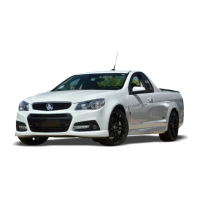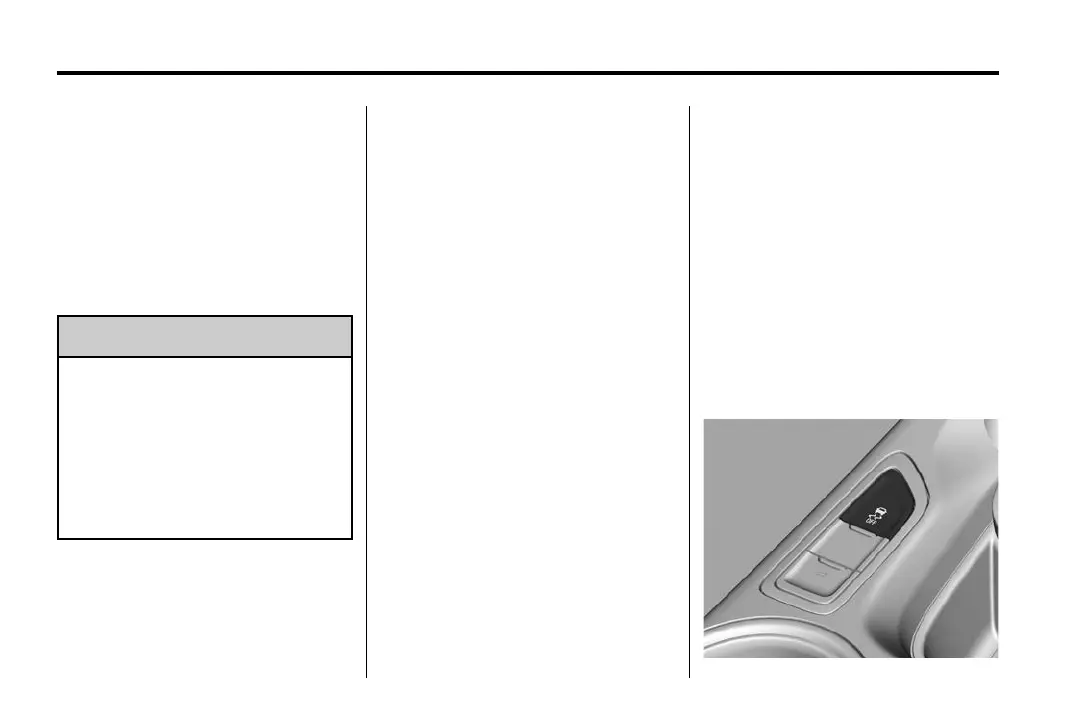Holden VF Ute Owner Manual (Holden-Localizing-Holden-6070613) - 2014 -
1st Edition - 4/3/13
9-18 Driving and Operating
Electronic Stability
Control (ESC)
The vehicle has an Electronic
Stability Control (ESC) system
which combines antilock brake,
traction and stability control systems
and helps the driver maintain
directional control of the vehicle in
most driving conditions.
{
Warning
Do not let this special safety
feature tempt you into taking risks
when driving. Traffic safety can
only be achieved by adopting a
responsible driving style. The
vehicle's speed should always be
adjusted to suit road and traffic
conditions.
When you first start the vehicle and
begin to drive away, the system
performs several diagnostic checks
to ensure there are no problems.
The system may be heard or felt
while it is working. This is normal
and does not mean there is a
problem with the vehicle. The
system should initialise before the
vehicle reaches 40 km/h.
If the system fails to turn on or
activate, the
d light illuminates in
the instrument cluster and the
appropriate message will be
displayed.
See Ride Control System Messages
on page 5-28.
This
d will flash on the instrument
cluster when the ESC system is
both on and activated.
The system may be heard or felt
while it is working; this is normal.
When the
g light is on solid, the
system will not assist the driver in
maintaining directional control of the
vehicle. Adjust your driving
accordingly.
The Electronic Stability Control
(ESC) system is automatically
enabled whenever the vehicle is
started. To assist the driver with
vehicle directional control,
especially in slippery road
conditions, the system should
always be left on. But, ESC can be
turned off if needed.
If the vehicle is in cruise control
when the system begins to assist
the driver maintain directional
control of the vehicle, the
d light will
flash and the cruise control will
automatically disengage. The cruise
control system may be re-engaged
when road conditions allow. See
Cruise Control on page 9-20.

